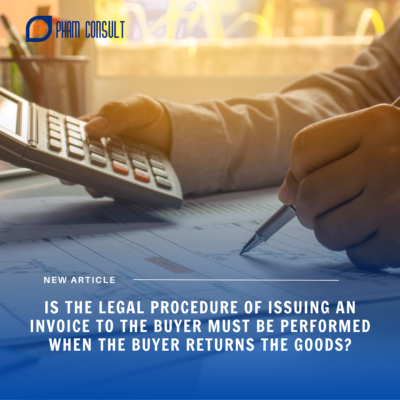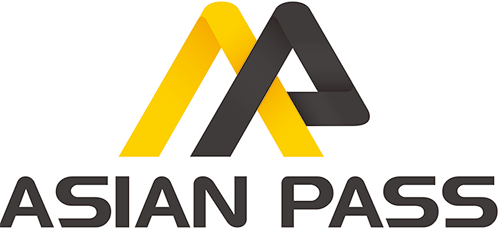The return of goods to the production unit (seller) is a frequent occurrence in the production business process. Goods returned to businesses may be because the item does not meet the product quality, type or specifications,… and many other reasons that may appear in business. So do I have to carry out legal procedures to issue an invoice to the buyer when the buyer returns the goods? Let’s find out with Pham Consult through the article below!

So in case the goods are returned, does the business have to carry out the legal procedure of issuing an invoice to the buyer?
Principles for making invoices and documents are specified in Clause 1, Article 4 of Decree 123/2020/ND-CP as follows:
Principles for creating, managing and using invoices and documents
1. When selling goods or providing services, the seller must issue an invoice to deliver to the buyer (including cases of goods and services used for promotion, advertising, sample goods, goods and services). services used to give, donate, donate, exchange, pay instead of wages to workers and internal consumption (except for goods circulated internally to continue the production process); export of goods in the form of loans , loan or return of goods) and must fully record the content as prescribed in Article 10 of this Decree. In case of using electronic invoices, it must follow the tax authority’s standard data format as prescribed in Article 12 of this Decree.
…
In addition, in Official Dispatch 8999/CTTPHCM-TTHT of 2023, it is stated as follows:
…
In cases where an organization or individual purchases goods, the seller has issued an invoice and the buyer has received the goods, but later the buyer discovers that the goods do not comply with specifications or quality and must return all or part of the goods. Then the seller issues a return invoice to reduce or replace the invoice that was issued. The seller and buyer have an agreement clearly stating the returned goods.
In cases where goods purchased before January 1, 2023 are subject to VAT reduction at a tax rate of 8%, after December 31, 2022, the buyer returns the goods due to incorrect specifications and quality. The seller issues an invoice to return the goods with a VAT rate of 8%.
…
From the regulations just mentioned, it can be seen that if an item is returned for any reason (does not meet the quality, type, product specifications, etc.), the business must prepare and export the product. invoice to the buyer to reduce or replace the established invoice.
How are goods returned invoices declared by businesses according to current regulations?
Pursuant to Official Dispatch 28218/CTHN-TTHT of 2022, there are instructions on the declaration period for returned goods invoices as follows:
…
In case the Company issues a return invoice, adjustment invoice, or replacement invoice according to the provisions of Article 4 and Article 19 of Decree No. 123/2020/ND-CP above, the Company shall declare VAT on the above invoices is as follows:
– For return invoices: The company declares at the time the return invoice is issued.
– For adjusted and replaced invoices: The Company shall make additional declarations and adjustments in the tax period containing errors as prescribed in Article 47 of the Law on Tax Administration No. 38/2019/QH14 dated June 13/ 2019 of the National Assembly and Clause 4, Article 7 of Decree 126/2020/ND-CP dated October 19, 2020 of the Government.
…
Accordingly, in the case of issuing an invoice due to returned goods, the enterprise needs to declare that invoice at the period in which the returned goods invoice is issued.
What are the legal procedures for adjusting electronic invoices with tax code errors?
According to Clause 2, Article 19 of Decree 123/2020/ND-CP, if an electronic invoice has errors in the tax code, businesses can choose one of two ways to use electronic invoices as follows:
The first method: The seller issues an electronic invoice to adjust the invoice that has been created with errors.
In case the seller and buyer have agreed to draw up a written agreement before making an invoice to correct an invoice that has errors, the seller and buyer shall make a written agreement clearly stating the errors, then The seller issues an electronic invoice to adjust the invoice that has been created with errors.
Electronic invoices to adjust electronic invoices that have been issued with errors must have the words “Adjustment for invoice Form number… symbol… number… date… month… year”.
Second method: The seller issues a new electronic invoice to replace the erroneous electronic invoice unless the seller and buyer have agreed to draw up a written agreement before issuing an invoice to replace the invoice. If there are errors in the invoice, the seller and buyer will make a written agreement clearly stating the errors, then the seller will issue an electronic invoice to replace the invoice that was created with errors.
The new electronic invoice to replace the electronic invoice that was created with errors must have the words “Replace for invoice Model number… symbol… number… date… month… year” .
The seller digitally signs the new electronic invoice to adjust or replace the electronic invoice that was created with errors, then the seller sends it to the buyer (in case of using an electronic invoice without the agency’s code). tax) or send it to the tax authority so that the tax authority can issue a code for a new electronic invoice to send to the buyer (in case of using an electronic invoice with a tax authority code).
So, through the article on Pham Consult, we have helped you understand more about the issue of whether legal procedures must be carried out to issue an invoice to the buyer when the buyer returns the goods? Hope the above information will be useful to you.
Comments




 VI
VI